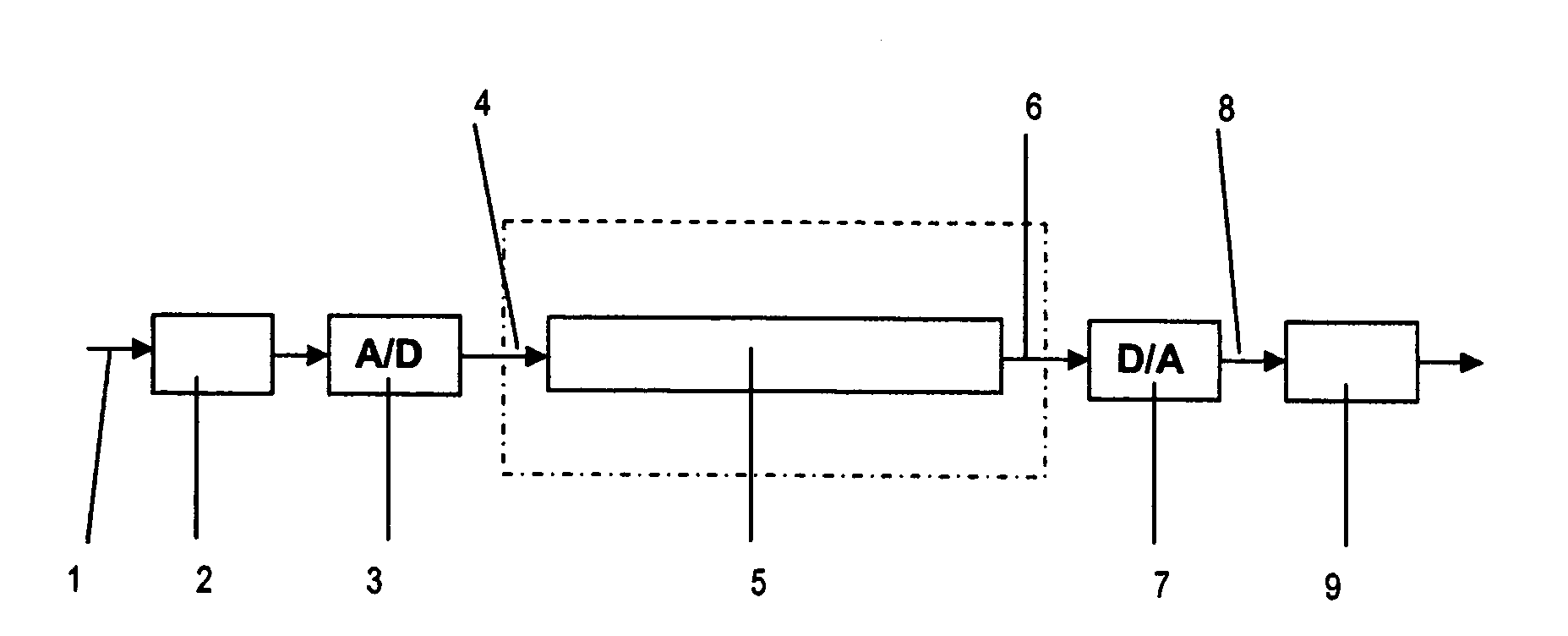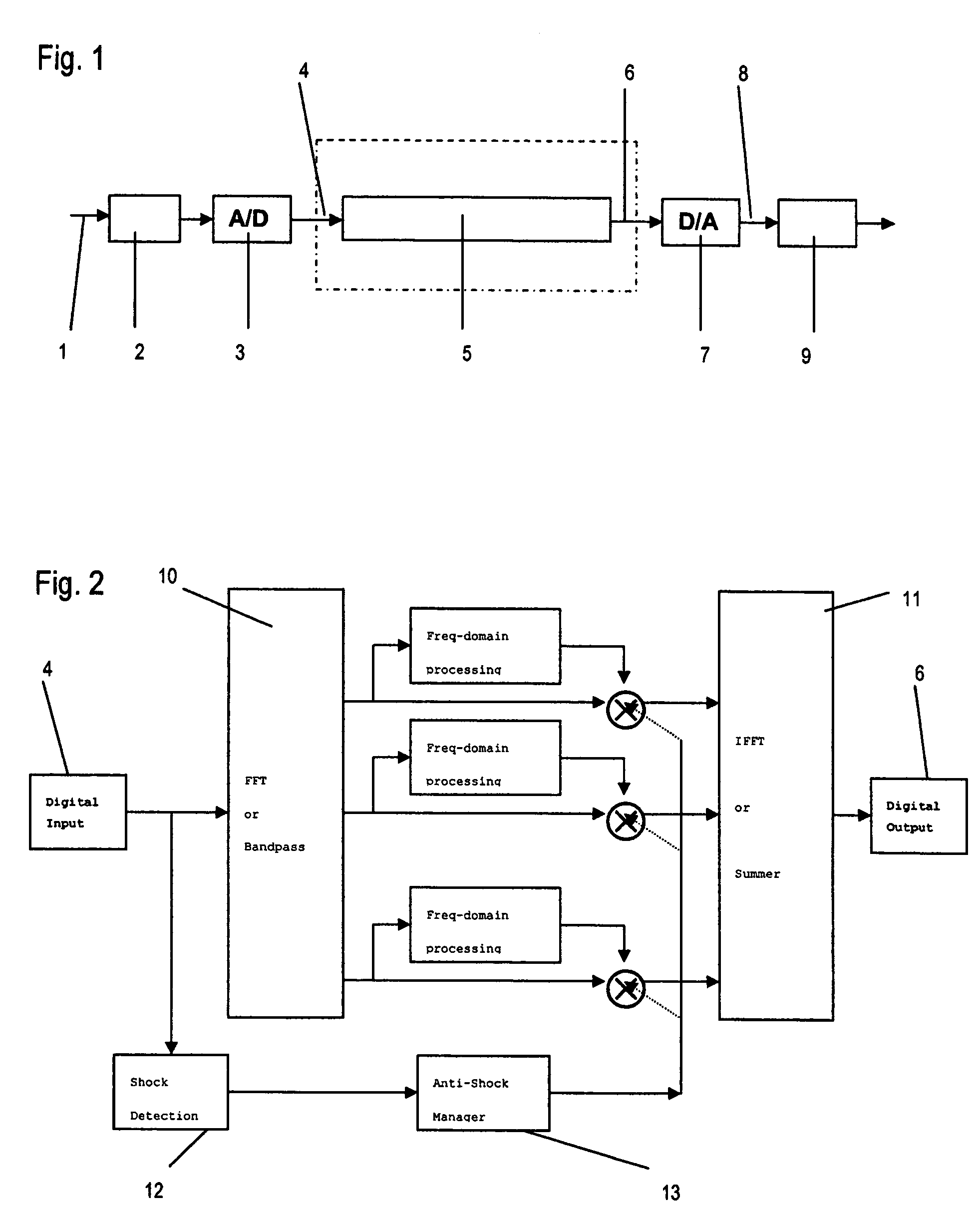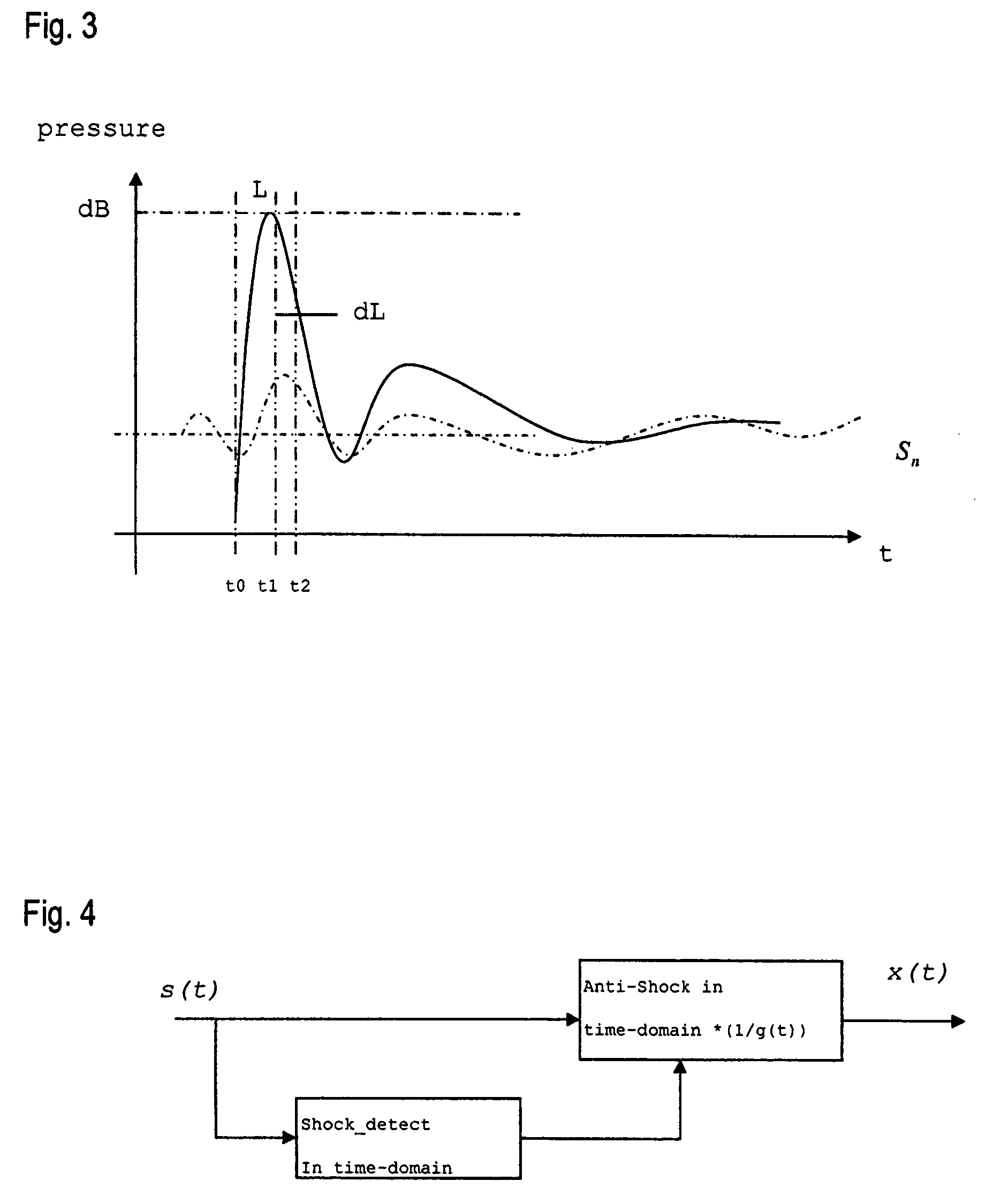Method and system for acoustic shock detection and application of said method in hearing devices
a technology for detecting acoustic shock and audio signals, applied in the direction of hearing aid testing/monitoring, electrical equipment, etc., can solve the problems of serious sound quality distortion, too slow to be effective, and inability to detect acoustic shock events, etc., to achieve reliable and fast detection of acoustic shock events in audio signals
- Summary
- Abstract
- Description
- Claims
- Application Information
AI Technical Summary
Benefits of technology
Problems solved by technology
Method used
Image
Examples
first embodiment
[0068]In a first embodiment, the shock detection and the anti-shock management will be both performed in the time-domain, as depicted schematically in the block diagram of FIG. 4.
[0069]The shock peak thus can be detected without delay but the anti-shock process could be delayed until a shock is detected. Therefore, a few samples of signal delay such as 250 μs (i.e. n=4 for sampling rate 16 kHz) for anti-shock management is required. As can be see from the lower curve of FIG. 5, the whole shock part cannot be handled with the anti-shock process in the time-domain without adding additional delay, which will cause distortion of shock event.
[0070]Hence, additional time delay is required to be added by these few samples in addition to the existing system time delay. Adding additional time delay at this juncture could cause artificial effects on the input signals. The threshold delay beyond which this negative impact would happen is determined by the overall system delay, the type of shoc...
second embodiment
[0079]In the present invention, the shock detection takes place in the time-domain whereas the treatment or management respectively of the signal takes place in the frequency-domain, as depicted schematically in FIG. 6.
[0080]The shock detection will be carried out by the shock detection module 12 in the time domain as already described above with no additional time delay required. The signal s(t) in the time-domain is then transformed into frequency-domain by a TTF module 14 for any frequency-domain signal processing in module 15 and the anti-shock management by the anti-shock management module 13. Afterwards, the frequency-domain signal gain(f) is transformed back to time-domain by the FTT module 16 resulting in a new signal y(t).
[0081]For example, the signal transformation from time-domain to frequency-domain and then back to time-domain is frame-based by applying a certain window such as Hanning or Hamming. The frame size is typical 2N samples such as 64(N=5) for 32-bit FFT, whic...
PUM
 Login to View More
Login to View More Abstract
Description
Claims
Application Information
 Login to View More
Login to View More - R&D
- Intellectual Property
- Life Sciences
- Materials
- Tech Scout
- Unparalleled Data Quality
- Higher Quality Content
- 60% Fewer Hallucinations
Browse by: Latest US Patents, China's latest patents, Technical Efficacy Thesaurus, Application Domain, Technology Topic, Popular Technical Reports.
© 2025 PatSnap. All rights reserved.Legal|Privacy policy|Modern Slavery Act Transparency Statement|Sitemap|About US| Contact US: help@patsnap.com



